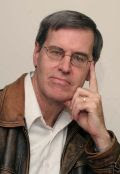Phil Morrison was an esteemed member of my research advisory board. Phil died April 22nd. Jennet Conant wrote a tribute to Phil which appeared in the Boston Globe. I have copied this below:
Last of the outspoken scientists
Jennet Conant
Boston Globe
28 April 2005
Some deaths mark the end of an era, as with the passing of kings, presidents, and certain beloved pop stars, but seldom do they signal the end of a particular species, the last of their kind.
With the passing of Philip Morrison last Friday, however, so close on the heels of Hans Bethe and Robert Bacher, science has lost the last of the brilliant atomic pioneers who developed the first nuclear bomb, felt the blast of the terrifying test explosion at Trinity, and bore witness to the moral upheaval and unprecedented threat posed by the fiery display of force on that gray New Mexico morning on July 16, 1945.
Forged in the heat of that indelible explosion and the horrifying destruction of Hiroshima and Nagasaki less than a month later, Morrison, like many of his Los Alamos colleagues, became a leading advocate of international arms control and a vigorous critic of the political and military leaders he had faithfully served.
He belonged to a generation of outspoken citizen scientists who came of age before the nuclear transformation of warfare, the repressive politics of the Cold War, and the reliance of university research laboratories on military funding. The chastening example of Los Alamos's controversial director, J. Robert Oppenheimer -- who was investigated by the FBI for more than a decade before his opposition to the hydrogen bomb led to a humiliating hearing and his security clearance being revoked -- has stood for five decades as a lesson to scientists to keep their heads down and their mouths shut. Today it would be regarded as foolhardy for any ambitious young physicist to be an outspoken critic of US nuclear policy. Not surprisingly, few dissenting voices are heard.
Perhaps Morrison's passionate commitment to public life belonged to a time when American scientists' experience of war was not limited to a televised demonstration of shock and awe. Morrison was one of a handful of atomic experts sent to Japan to inspect the damage inflicted by their awesome new weaponry, and he accepted the assignment with the sense that he was completing his "long witness to the entire tragedy," from the bomb's creation to its dreadful execution.
He traveled across the flattened country by train and saw cities large and small left in smoldering ruins by raids of up to 1,000 B-29 bombers. In Hiroshima he saw hundreds of wounded lying along the railway platform and realized that most of them would eventually die from radiation sickness.
"Yet there on the ground, among all those who had cruelly suffered and died, there was not all that much difference between old fire and new," he wrote. "Both ways brought unimaginable inferno." The real difference was less in the nature or scale of the destruction than in the ease of the new kind of war and "the chilling fact" that a single bomb could take out a good-sized city.
Morrison's death, along with that of the other Los Alamos veterans, leaves not only a void but a troubling silence. Scientists have become a quiet, docile lot, and it has been left to the Los Alamos dragons like Morrison to have the temerity to say again and again what they first warned of as far back as August 1945.
"Secrecy will not defend us, for skill and atoms are everywhere," Morrison wrote in Scientific American in August 1995, reaffirming views he held to be as right today as they were at the end of the war. "No defenses are likely to make up for the enormous energy release; it will never be practical to intercept every bomb, and even a few can bring grave disaster. No likely working margin of technical superiority will defend us, either, for even a smaller nuclear force can wreak its intolerable damage."
Morrison remained convinced that the idealistic goal of Oppenheimer and Niels Bohr was still the only viable course of action: a comprehensive international control pact for nuclear weapons. He was not naive about the diplomatic challenges involved in achieving such an agreement, and he resolutely continued to fight an against-the-tide battle for disarmament. "The task is not simple," he wrote, "but was any international goal more important than securing the future against nuclear war?"
Jennet Conant is the author of the forthcoming book "109 East Palace: Robert Oppenheimer and the Secret City of Los Alamos."
© Copyright 2005 The New York Times Company
------------------------------------------------------------------------------
Citation:
Jennet Conant. "Last of the outspoken scientists," Boston Globe, 28 April 2005.
------------------------------------------------------------------------------
This material is distributed exclusively as an educational service. Inclusion of copyrighted material is in accordance with Title 17 U.S.C. Section 107 known as 'fair use' -- for more information visit http://www.law.cornell.edu/uscode/17/107.shtml.
I urge visitors to this site to use the material herein only within the constraints of Title 17 U.S.C. Section 107. If you wish to use copyrighted material from this site for purposes that go beyond 'fair use,' you must obtain permission from the copyright owner. For citations please use the original source included at the end of each text and do not link to these pages.
I urge you to respect the needs of writers and publishers to receive fair compensation for their services -- most publishers archive this material and provide it in electronic form for a reasonable fee.
Monday, May 02, 2005
Subscribe to:
Post Comments (Atom)

No comments:
Post a Comment